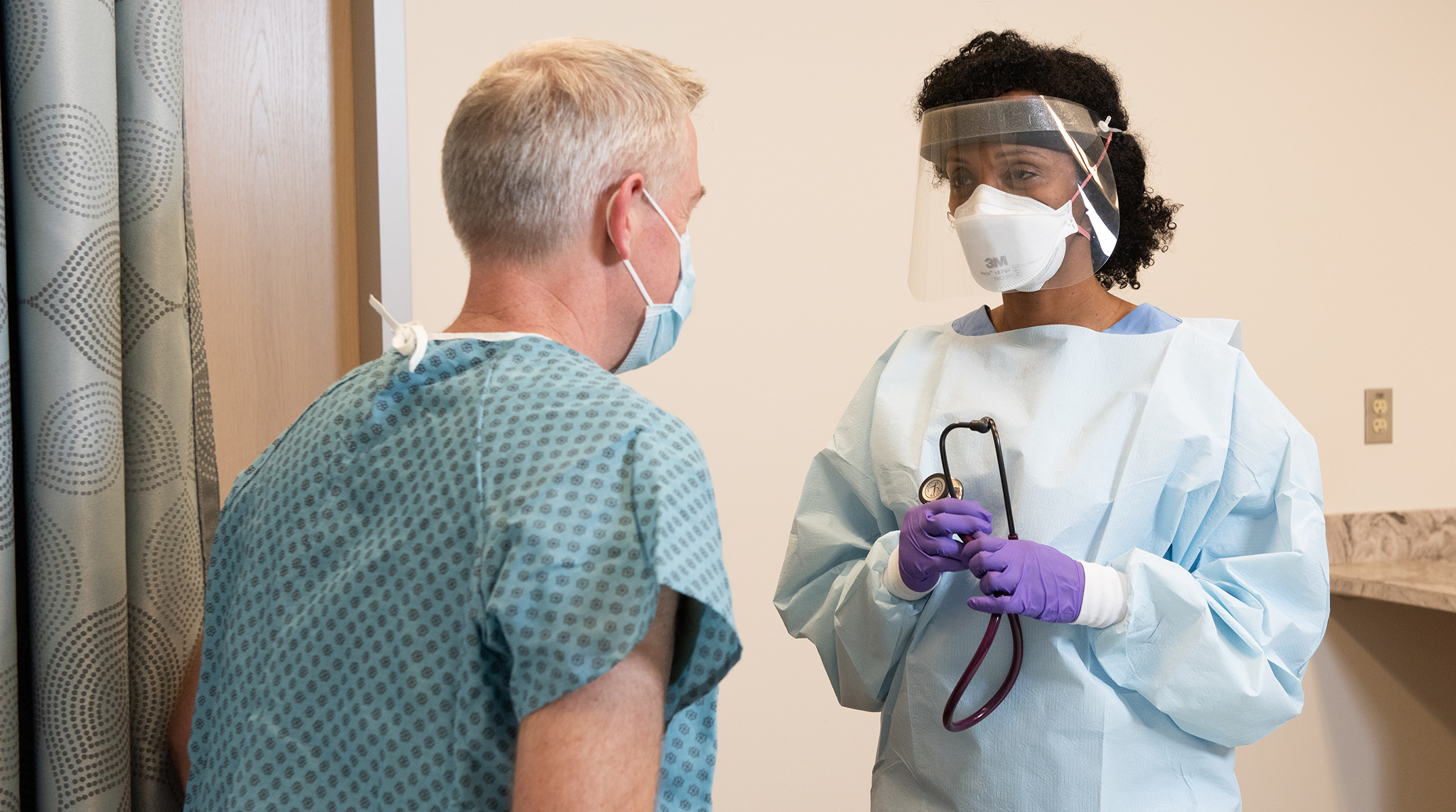
Healthcare workers are vital to providing patients with the care that they need. One important aspect of a healthcare worker’s job and safety is the personal protective equipment used to help protect doctors, nurses, technicians and others tasked with helping people in clinics, urgent care facilities, hospitals and other places that provide treatment.
Surgical Masks vs. Surgical N95 Respirators
Healthcare workers commonly use surgical/procedure masks for patient care. The primary purpose of a surgical mask is to help keep spit and mucous generated by the wearer from reaching a patient or medical equipment. In addition, some surgical masks are designed to act as a barrier and resist penetration by high pressure streams of liquids such as those that might result from a human artery being punctured during surgery.
However, surgical masks are not necessarily designed to seal tightly to the face, so air can leak around the edges. N95 particulate respirators, on the other hand, are designed to help reduce the wearer’s exposure to airborne particulate hazards including both bioaerosols (e.g. bacteria and viruses) and nonbiological aerosols. Respirators contain filter material and are designed to form a seal with the wearer’s face so that air passes through the filter (instead of around the edges) before it is inhaled. Please reference this document to read more about N95 respirators and watch this helpful video.
N95 Respirators vs. Surgical N95 Respirators
That being said, there are differences between standard N95 respirators, often used in industrial settings such as manufacturing and construction, and surgical N95 respirators. Some N95 respirators certified by the U.S. National Institute for Occupational Safety and Health (NIOSH) may also be cleared by the U.S. Food and Drug Administration (FDA) as a surgical mask. These N95 respirators may also be referred to as medical respirators, healthcare respirators, or surgical N95s. The key difference between a standard N95 respirator and a surgical N95 respirator is fluid resistance. To learn more about these differences and for guidance about selecting the right type of surgical respirator, please carefully review this quick reference guide and watch this accompanying video.
Respiratory Protection Requirements
The U.S. Occupational Safety and Health Administration (OSHA) governs workplace respirator use in the United States including use in healthcare settings. The OSHA Respiratory Protection Standard (29 CFR 1910.134) specifies the requirements for employers assigning respiratory protection to workers. Under this standard, OSHA requires employers to develop and implement a written respiratory protection program that includes the procedures and elements for respirator use at their specific workplace. The written program must include all the elements required by OSHA including the following:
- Procedures for selecting respirators for use in the workplace
- Medical evaluations of employees required to use respirators
- Fit testing procedures for tightfitting respirators (Video)
- Procedures for proper use of respirators
- Procedures for cleaning, disinfecting, storing, inspecting, repairing, discarding and otherwise maintaining respirators
- Training of employees (Video)
Find out more about these requirements by watching this helpful video and reviewing this document. You can also learn more about practical considerations for respirator use in healthcare such as if you can use filtering facepiece respirators beyond their shelf life, how to extend the use of respirators, and how to disinfect powered air purifying respirators or elastomeric facepieces.
Whether conducting normal medical evaluations, performing surgery, handling emergency intake or facing a disease outbreak, our technical service team are available to help you select the right respiratory protection for your needs, contact us today for assistance.
